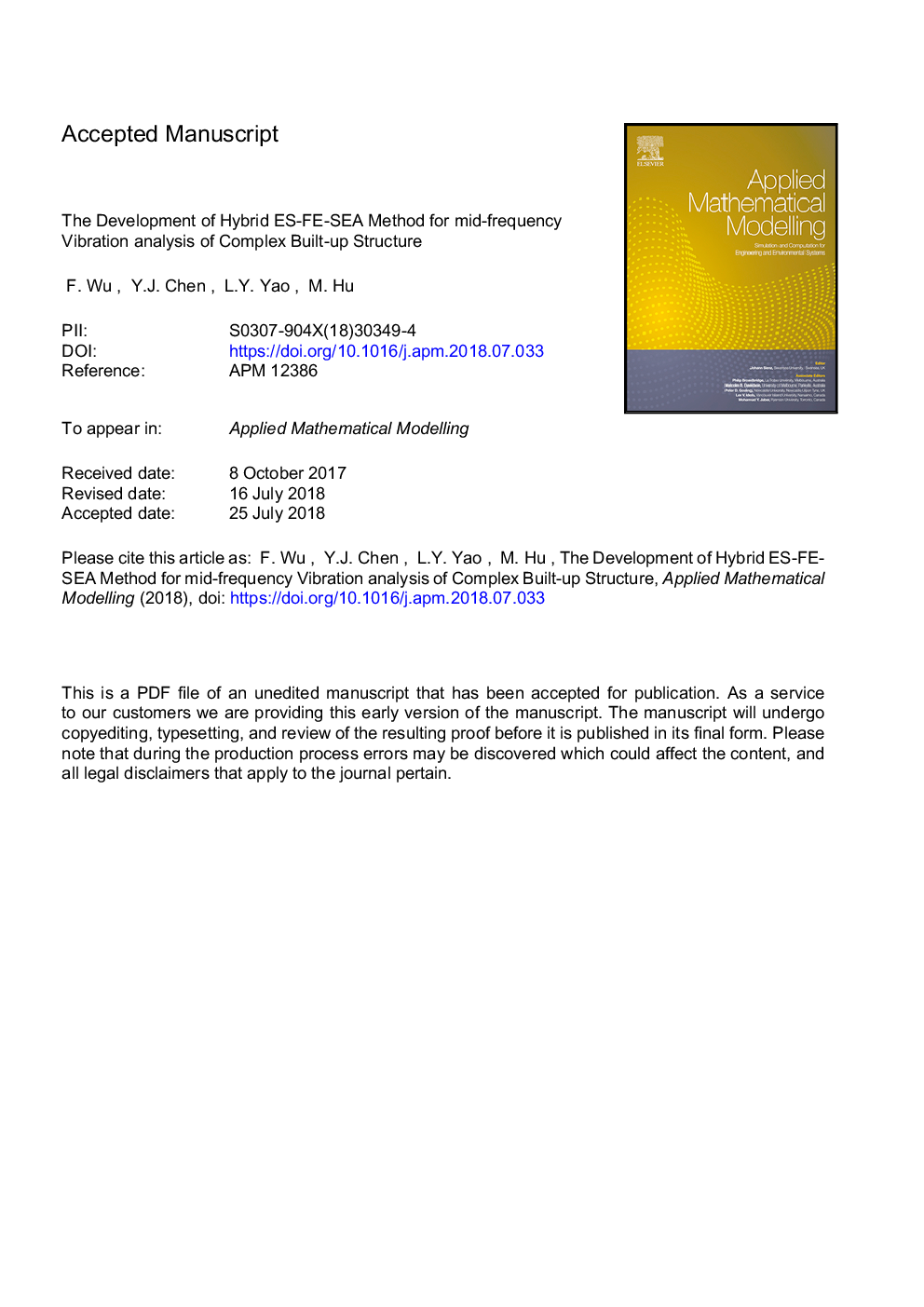| Article ID | Journal | Published Year | Pages | File Type |
|---|---|---|---|---|
| 11007217 | Applied Mathematical Modelling | 2018 | 41 Pages |
Abstract
The beam-plate structures and its complex composite structures are widely used in practical engineering. Recently, a hybrid FE-SEA method was applied for the vibration analysis of beam-plate structures in mid-frequency regime. However, the accuracy of prediction is still low, due to “overly-stiff” feature of embedded conventional FEM. In this work, a hybrid ES-FE-SEA model of a beam-plate built-up structure is developed for response prediction in vibration testing, in which, the edge-based smoothed technique is applied in the 3D beam structure FEM model to soften the whole system stiffness. Then, combined with SEA, this ES-FEM is embedded to achieve a hybrid ES-FE-SEA framework, to improve the accuracy of mid-frequency response predictions of the complex built-up structure. In hybrid ES-FE-SEA model, the plate structure which has a higher model density is considered as a statistical subsystem and modeled statistically using statistical energy analysis (SEA). The beam structure with a relative lower model density is modeled deterministically using edge-based smooth finite element method (ES-FEM). The coupling between these two different types of subsystems is achieved through the diffuse field reciprocity relation. The acceleration loads are applied to the model. The results obtained by the ES-FE-SEA and FE-SEA are compared. It is found that the hybrid ES-FE-SEA method is reliable for the mid-frequency vibration problems of the beam-plate built-up structure. The proposed ES-FE-SEA is verified by various numerical examples.
Keywords
Related Topics
Physical Sciences and Engineering
Engineering
Computational Mechanics
Authors
F. Wu, Y.J. Chen, L.Y. Yao, M. Hu,
